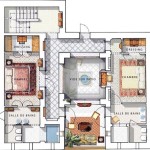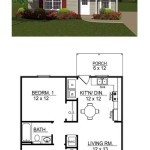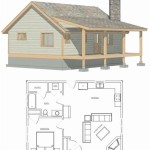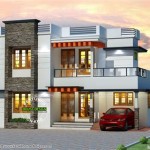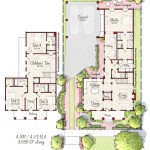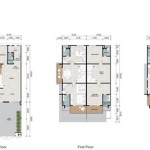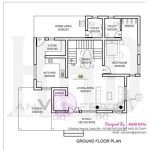Understanding House Plan Elevation Photos
House plan elevation photos are visual representations of a home's exterior from a specific viewpoint. These photographs are crucial for understanding the architectural style, materials, and overall aesthetic of a building before construction begins or during the planning stages of a remodeling project. They provide a clear picture of how the house will appear from different angles and help stakeholders, including architects, builders, homeowners, and potential buyers, visualize the final product. Elevation photos are distinct from floor plans, which illustrate the interior layout, and site plans, which show the building's placement on the property. Instead, elevation photos focus solely on the external appearance, including elements like windows, doors, roofing, siding, and any decorative features.The purpose of elevation photos is multifaceted. Primarily, they serve as a communication tool. Architects use them to convey their design intent to clients, builders utilize them to ensure accurate construction, and homeowners rely on them to make informed decisions about the appearance of their homes. These photos also play a critical role in obtaining building permits, as local authorities often require them to assess compliance with zoning regulations and aesthetic guidelines. Furthermore, elevation photos are valuable for marketing purposes, showcasing the home's features and attracting potential buyers or renters. They allow for a comprehensive understanding of the design, reducing potential misunderstandings and ensuring that the final result aligns with the expectations of all parties involved.
The creation of accurate and detailed elevation photos requires careful attention to detail and a thorough understanding of architectural principles. These photos are typically generated using computer-aided design (CAD) software or building information modeling (BIM) software. These programs allow architects to create precise 3D models of the building, from which elevation views can be extracted. The software also allows for the application of different materials and finishes, providing a realistic representation of the finished product. In some cases, hand-drawn elevations are still used, particularly for smaller projects or for conceptual sketches. Regardless of the method used, clear labeling and accurate dimensions are essential for ensuring that the elevation photos are easily understood and used effectively.
Key Components of House Plan Elevation Photos
Several key components are consistently present in house plan elevation photos, contributing to their overall clarity and usefulness. These elements provide critical information about the building's exterior and aid in its accurate construction and aesthetic appreciation.
Exterior Walls and Finishes: The primary focus of an elevation photo is the depiction of the exterior walls. These walls are rendered to show the exact type of siding material being used (brick, vinyl, wood, stucco, etc.) and the color or finish applied. The elevation also indicates the height and width of the walls, as well as any architectural details such as cornices, moldings, or other decorative trim. The accuracy of the wall representation is crucial for ensuring that the building's facade matches the intended design.
Windows and Doors: All windows and doors are clearly depicted, including their size, shape, and style. The elevation photo specifies the type of window (double-hung, casement, slider, etc.) and the material used for the frames (wood, vinyl, aluminum, etc.). Similarly, doors are shown with their dimensions, swing direction, and hardware details. The placement and style of windows and doors significantly impact the overall appearance of the house and are important considerations in the design process.
Roofing: The roof is a prominent feature of any house, and its depiction in the elevation photo is critical. The photo illustrates the roof's slope, material (shingles, tile, metal, etc.), and overhang. It also shows the location of any vents, chimneys, or skylights. The roof's design not only contributes to the aesthetic appeal of the house but also impacts its structural integrity and weather resistance.
Types of House Plan Elevations
Different types of house plan elevations offer varying perspectives of the building's exterior, each serving a specific purpose in the design and construction process. Understanding these different elevation types is crucial for interpreting house plans accurately.
Front Elevation: The front elevation depicts the main entrance or facade of the house as viewed from the street. It is often the most detailed elevation, showcasing the primary architectural features and design elements. The front elevation typically includes the front door, windows facing the street, any porches or balconies, and decorative details that define the house's style. This view is often used for marketing purposes and for assessing the house's curb appeal.
Rear Elevation: The rear elevation shows the back of the house, often facing the backyard or garden. While it may not be as detailed as the front elevation, it still provides important information about the building's exterior. The rear elevation might include features such as patios, decks, or secondary entrances. It is also important for understanding the relationship between the house and the surrounding landscape.
Side Elevations: The side elevations, also known as left and right elevations, show the sides of the house. These elevations are particularly useful for understanding the building's massing and how it relates to the adjacent properties. Side elevations often depict windows, doors, and other architectural features that are not visible from the front or rear. They provide a comprehensive view of the house's overall design.
Interpreting Information from House Plan Elevation Photos
Successfully interpreting information from house plan elevation photos requires careful observation and an understanding of architectural terminology. Several key aspects should be considered when reviewing these photos.
Scale and Dimensions: Elevation photos are typically drawn to scale, and the dimensions of various elements are clearly marked. Pay close attention to the overall height and width of the building, as well as the sizes of windows, doors, and other features. Understanding the scale allows for accurate visualization and helps in assessing the proportionality of the design.
Materials and Finishes: The elevation photo indicates the types of materials used for the walls, roofing, and other exterior elements. Look for notes or legends that specify the exact materials and finishes, such as brick type, siding color, or roofing shingle style. This information is crucial for understanding the aesthetic appearance and durability of the building.
Architectural Style: Elevation photos provide clues about the architectural style of the house. Look for characteristic features such as roof pitch, window styles, and decorative details that define the style (e.g., Victorian, Craftsman, Modern). Understanding the architectural style helps in appreciating the design intent and ensuring that the house fits within its surroundings.
Relationship to Site: While elevation photos primarily focus on the building's exterior, they can also provide some information about its relationship to the surrounding site. Look for indications of landscaping features, such as trees, shrubs, or walkways. This context helps in visualizing the overall appearance of the house and how it integrates with its environment.
By carefully examining these components, individuals can gain a thorough understanding of the building's design and make informed decisions about its construction or renovation. The ability to interpret elevation photos effectively is essential for anyone involved in the building process, from architects and builders to homeowners and prospective buyers. Clear, accurate, and well-presented elevation photos are invaluable tools for communication and visualization, ensuring that the final result aligns with the intended design and meets the expectations of all stakeholders.
Ultimately, house plan elevation photos serve as a vital bridge between architectural concepts and tangible realities. They allow for a comprehensive exploration of a building's exterior, facilitating informed decision-making and ensuring a successful outcome in any construction or renovation project.

Floor Plan Elevation Sample

Architecture House Plan And Elevation Complete Drawing

20 Ground Floor Elevation With Plan

Scheme Of The Tested Single Family House A Front Elevation B Scientific Diagram

33x50 Modern House Plan And Elevation

How To Read House Plans Elevations

House Floor Plan With Elevation Details

House Plan And Front Elevation Drawing File 630 Sqf Cadbull

Small House Elevation And Floor Plan

What Are Elevations Building Design House

